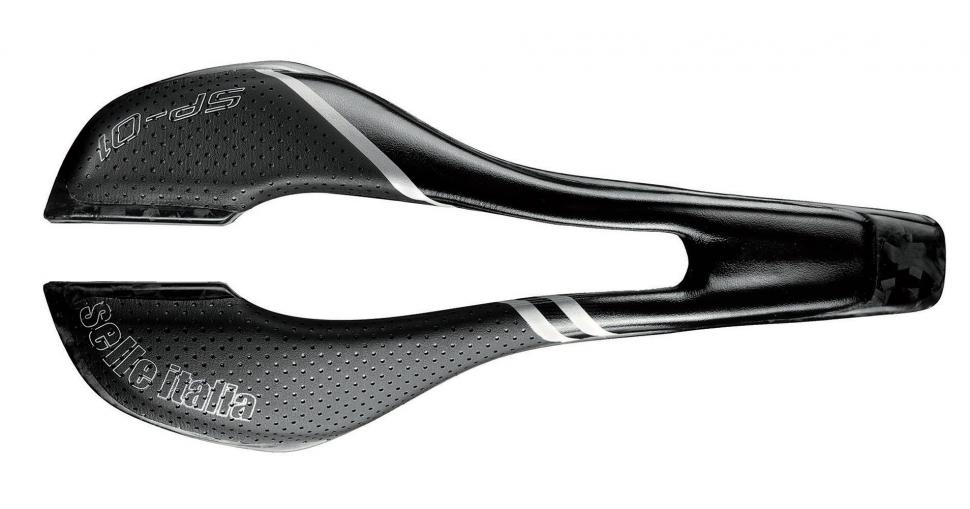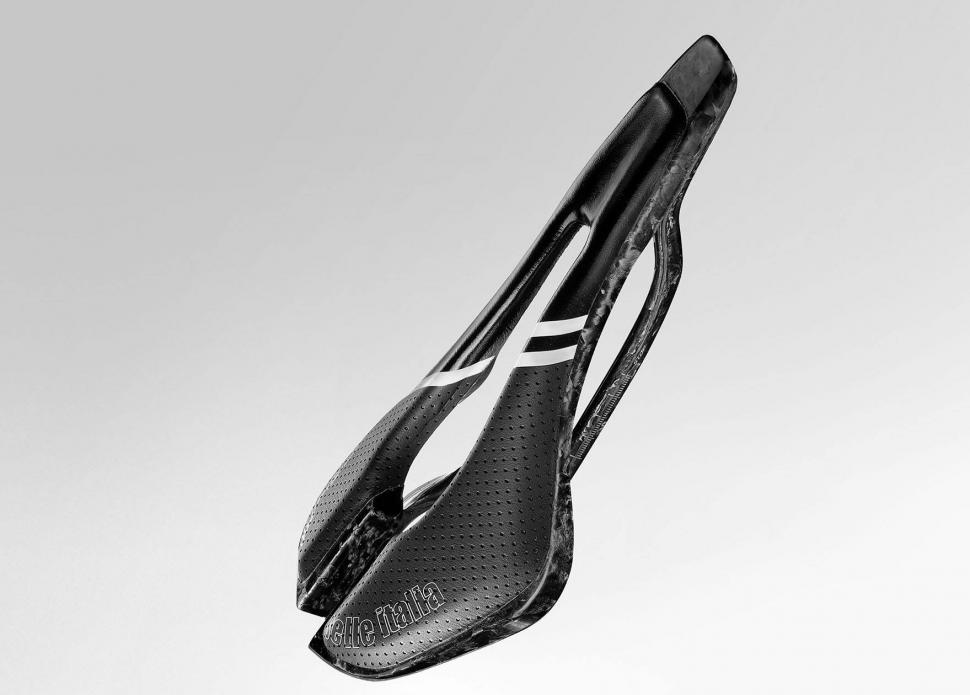- News
- Reviews
- Bikes
- Components
- Bar tape & grips
- Bottom brackets
- Brake & gear cables
- Brake & STI levers
- Brake pads & spares
- Brakes
- Cassettes & freewheels
- Chains
- Chainsets & chainrings
- Derailleurs - front
- Derailleurs - rear
- Forks
- Gear levers & shifters
- Groupsets
- Handlebars & extensions
- Headsets
- Hubs
- Inner tubes
- Pedals
- Quick releases & skewers
- Saddles
- Seatposts
- Stems
- Wheels
- Tyres
- Tubeless valves
- Accessories
- Accessories - misc
- Computer mounts
- Bags
- Bar ends
- Bike bags & cases
- Bottle cages
- Bottles
- Cameras
- Car racks
- Child seats
- Computers
- Glasses
- GPS units
- Helmets
- Lights - front
- Lights - rear
- Lights - sets
- Locks
- Mirrors
- Mudguards
- Racks
- Pumps & CO2 inflators
- Puncture kits
- Reflectives
- Smart watches
- Stands and racks
- Trailers
- Clothing
- Health, fitness and nutrition
- Tools and workshop
- Miscellaneous
- Buyers Guides
- Features
- Forum
- Recommends
- Podcast
TECH NEWS
 SP 01 - top.jpg
SP 01 - top.jpgSelle Italia’s futuristic SP01 carbon saddle with “suspension link movement”
“Welcome to a new age for the saddle,” says Selle Italia in the press release for its new SP01 saddle which it claims offers “futuristic design, superb comfort and outstanding performance levels.”
Sounds like the marketing team has gotten carried away a little, but what is causing such excitement? Well, Italian saddle specialist Selle Italia has developed a carbon fibre saddle weighing 125g with a split design that allows the two halves of the saddle to move during pedalling.
It says this split design, which it calls “suspension link movement” can support the movement of the pelvis without compromising stability while pedalling. It offers no more insight into the supposed benefits of the design than that, so we’ve contacted them to try and find out a little more detail.
Selle Italia doesn’t say much about the actual suspension properties of the SP01, instead, going for the improved pedalling efficiency angle in its press release. We do wonder if the unique shape of the rear section of the saddle could provide obvious seated compliance benefits for dealing with rougher roads.
Aside from the split design, the saddle is made from carbon composite materials with the rails moulded to the upper to create a lightweight product. A microfibre cover conceals a slim layer of foam padding.
It’s not going to be cheap, this new saddle, but then you already guessed that. It will cost €349 and won’t be available until July 2017.
- 18 of the best saddles — the seats that improve cycling comfort for men and women
David worked on the road.cc tech team from 2012-2020. Previously he was editor of Bikemagic.com and before that staff writer at RCUK. He's a seasoned cyclist of all disciplines, from road to mountain biking, touring to cyclo-cross, he only wishes he had time to ride them all. He's mildly competitive, though he'll never admit it, and is a frequent road racer but is too lazy to do really well. He currently resides in the Cotswolds, and you can now find him over on his own YouTube channel David Arthur - Just Ride Bikes.
Latest Comments
- mdavidford 12 min 11 sec ago
To be quite honest, it's entirely ridiculous that we have such extended supply lines in the first place, with pixels being exported and re-exported...
- essexian 47 min 48 sec ago
Before I had even said this persons home address, my wife said upon hearing the story: "He's from Loggerheads isn't he...."
- chrisonabike 1 hour 12 min ago
April fools from Bristol Live?...
- Rendel Harris 2 hours 6 min ago
Well yes but that's the point of leasing, to buy that £60,000 car on finance you might have to put down a deposit of £10,000 and pay £1500 a month...
- brooksby 3 hours 24 min ago
I had to walk past my old stomping ground on Park Row the other day, which is the western end of this same scheme (Marlborough Street by the BRI,...
- brooksby 3 hours 28 min ago
Or turning that on its head: the aforementioned paint can can cause harm if it is *accidentally* damaged or is otherwise used in a way for which it...
- eburtthebike 36 min 8 sec ago
A comedian with a purpose can achieve more than the politicians e.g. Zelensky.
- Rekrab 9 hours 50 min ago
MORE LANES, MORE LANES!!!!
- Simon E 9 hours 56 min ago
The numbers don't tell anything like the whole story....
- Global Nomad 11 hours 49 min ago
good to see you're testing the farsports wheels - hope to see road.cc continue to expand the range of brands it considers. These or the shallower...

Add new comment
16 comments
This saddle gonna crack in half as soon as you crash
Bad idea!!!
Good if you suffer from 'Plymouth Argyles'
This is ideal for getting gravel and mud smack up the starfish.
So essentially it's a Selle SMP design, but in reverse. Instead of SMP's long split and eagle beak nose effectively dropping the front of the saddle away from the rider's crotch, here we have it pointed the other way around.
Nice try, and the carbon leaf spring concept is intriguing, but I'm not sure if it's going to offer the comfort it claims to do. On an SMP saddle, you're effectively pushing anything that can squash your genitalia and its blood flow away, so you can adopt deeper forward hip rotation and keep a low aero position longer compared to a more conventional design.
On Selle Italia's design because the suspension effect is almost all the way at the back, where you're going to be sat in anyway when riding more upright. Maybe one for upright-riding touring cyclists?
Looks like a nut cracker to me.
Didn't they do this with the SLK saddle, which I have. It isn't a bad saddle, slightly too much padding for my taste. I can't say I detect much movement between the two halves on the SLK though
Can't see this working that well. When it's clamped onto a seatpost the front pivot point will be isolated by the clamp and so the only flex will be from the clamp to the back of the saddle.
Isn't that the point of the leaf-spring arrangement at the rear of each side of the saddle?
OK so that video isn't great at demonstrating that which is what I missed, it concentrates on the two halves moving relative to each other along the long axis
The video is misleading.
I imagine the rails would be pretty rigid when clamped in the post with most of the flex occuring through the leaf springs allowing independent movement of the two halves of the saddle.
I've used a similar saddle with rails fixed centrally inboard of the ischial bones so the rigidity of the all carbon seat meant you were still 'sitting on' rather than 'sitting in' the saddle but the added independent flex of the saddle afforded by the design made it extremely comfortable.
I'm surprised more manufacturers of carbon saddle haven't adopted these principles as they exploit properties unique to a carbon fibre saddle. Having said that I'm currently riding an all carbon Specialized Toupe Pro, so wide fixed rails at the rear, and have no issues with comfort.
you'd definitely need a rear mudguard with that
Nah... just a saddle bag.
I'm reminded of the Merek Mega SQ1 that used a yoke or leaf spring to remove the two wide rear mounting points for the rails and had a single central pivot point to the seat allowing the two sides of the saddle to flex independent of the rails.
A great little saddle. Lightwieght and extremely comfortable.
This.
i used that SQ1 and couldn't believe it's actually comfortable.
Was the lightning strike really necessary. As bad as the Americans with their explosions.
The birth of Franken-saddle